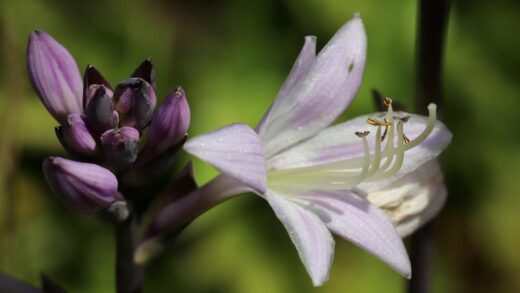Light requirements of primrose

Understanding the specific light requirements of primroses is fundamental to their successful cultivation, as it directly impacts their growth, flowering, and overall health. The majority of primrose species are woodland or meadow plants that thrive in dappled or partial shade, a condition that provides them with protection from the intense, scorching rays of the midday and afternoon sun. An ideal location often mimics the edge of a forest, offering bright, indirect light or gentle morning sun. While some alpine varieties can tolerate more direct sun, particularly in cooler climates, their roots must be kept cool and moist. Providing the correct balance of light is essential for promoting vigorous growth and ensuring a spectacular display of blooms.
The preference for partial shade is rooted in the evolutionary history of the Primula genus. Many species evolved under the canopy of deciduous trees, where they are exposed to more direct sunlight in the early spring before the trees leaf out. This early spring light fuels their initial growth and flowering. As the season progresses and the canopy fills in, the plants are then protected from the increasing intensity of the summer sun. Replicating this changing light pattern in a garden setting, perhaps by planting under high-branched deciduous trees or on the east side of a building, creates the perfect environment for these plants.
The consequences of providing incorrect light levels can be significant. Too much direct sun, especially during the hottest part of the day, will lead to scorched, yellowed, or bleached leaves. The plant will show signs of stress, such as wilting, and flower production will be poor, with blooms fading quickly. In severe cases, excessive sun exposure, combined with the heat stress it creates, can be fatal. It is one of the most common reasons why primroses fail to establish as long-term perennials in the garden, particularly in warmer regions.
Conversely, while primroses are shade-tolerant, they do not thrive in deep, dark shade. Insufficient light can also lead to problems, although they are generally less severe than those caused by excessive sun. A primrose growing in deep shade may become leggy, with elongated leaf stems, as it stretches towards a light source. The foliage may be a lush dark green, but the plant’s energy will be directed towards leaf production rather than flowering. As a result, a plant in too much shade will produce few, if any, flowers, defeating the primary purpose for which most people grow them.
The ideal light exposure for primroses
For the vast majority of commonly grown primroses, including the Polyanthus and Acaulis types, the ideal light exposure is partial shade. This is typically defined as an area that receives between three to six hours of direct sun per day, but is shaded for the remainder. Critically, this sun exposure should occur during the cooler parts of the day, namely in the morning. An east-facing garden bed that receives direct sun from sunrise until late morning, and is then in shade for the hot afternoon hours, provides a perfect environment. This allows the plant to photosynthesize effectively without suffering from heat and moisture stress.
More articles on this topic
Another excellent way to provide ideal light is by creating “dappled shade.” This is the kind of light found beneath deciduous trees with a high, open canopy, such as oaks or locusts. The sunlight is filtered through the leaves, creating a shifting pattern of light and shadow on the ground below. This environment provides bright, indirect light for much of the day, protecting the primroses from the full intensity of the sun while still giving them enough light energy to thrive and flower profusely. It also closely replicates the natural woodland habitat of many primrose species.
The geographical location and climate play a significant role in determining the ideal light exposure. In cooler, northern climates with less intense summer sun, primroses can often tolerate more direct sunlight than they can in hotter, southern regions. In a cool maritime climate, for instance, a primrose might be perfectly happy in a location that receives sun for most of the day. In contrast, in a hot continental climate, even a few hours of midday sun could be lethal, and a position in much deeper shade might be necessary for survival. Gardeners must always consider their local conditions when siting their plants.
Certain specific groups within the Primula genus have slightly different preferences. Some of the hardy alpine species, like many Primula auricula varieties, are adapted to open, mountainous environments and can handle full sun. However, this tolerance is conditional upon their roots being kept cool and moist, a condition often met in their native habitat by growing in deep rock crevices. In a garden setting, this means they need exceptionally well-draining, gritty soil that stays cool, and they will still appreciate some shade from the most intense afternoon sun in hotter climates.
Signs of incorrect light levels
Primrose plants are very communicative and will display clear signs if they are receiving an inappropriate amount of light. One of the most obvious signs of too much sun exposure is leaf scorch. This can manifest as brown, crispy edges on the leaves, or as large, bleached or yellowed patches in the center of the leaf where the tissue has been damaged by the intense light and heat. The vibrant colors of the flowers may also appear washed out or faded, and the blooms themselves will wilt and wither much more quickly than they would in a shadier location.
More articles on this topic
Another key indicator of excessive light is persistent wilting during the sunny part of the day. If you notice your primrose leaves drooping and looking limp every afternoon, even when the soil is adequately moist, it is a strong sign that the plant is losing water through its leaves faster than its roots can absorb it, a classic symptom of heat and light stress. While the plant may recover its turgor in the evening coolness, this daily cycle of stress will weaken it over time, reduce its vigor, and make it more susceptible to pests and diseases.
On the other hand, a primrose that is not receiving enough light will also show distinct symptoms. The most common sign is a significant reduction or complete lack of flowering. The plant may produce beautiful, healthy-looking, and often dark green foliage, but it will fail to set flower buds. This is because the plant does not have enough light energy to devote to the resource-intensive process of reproduction. If you have a primrose that produces lush leaves but no flowers year after year, insufficient light is the most likely culprit.
A plant in too little light may also exhibit etiolation, or “legginess.” The leaf petioles (stems) will become unusually long and thin as the plant actively stretches towards the nearest light source. The overall form of the plant will be sparse and open rather than the compact, rosette-like habit that is typical for most primroses. While the plant may survive in these conditions, it will not be aesthetically pleasing or healthy in the long run. Observing these clear visual cues allows a gardener to diagnose lighting problems and take corrective action by moving the plant to a more suitable location.
Adapting light conditions for indoor and outdoor plants
For outdoor garden primroses, adapting light conditions primarily involves careful site selection. Before planting, observe the proposed area throughout the day to accurately gauge how many hours of sun it receives and at what time of day. If you find your established primroses are in a spot that has become too sunny, perhaps due to the removal of a tree, you have two options: either move the plants to a shadier location or create artificial shade. This can be done by planting a taller shrub nearby or by using a temporary shade cloth during the hottest summer months.
Conversely, if an area has become too shady for your primroses to flower well, you may need to increase the amount of light they receive. This can often be achieved through selective pruning of nearby trees and shrubs. Thinning the canopy of an overhanging tree, a practice known as “limbing up,” can allow more dappled light to reach the ground below without removing the tree entirely. In some cases, the only solution may be to transplant the primroses to a brighter part of the garden that still offers protection from the harsh afternoon sun.
When primroses are grown indoors as temporary houseplants, which is common for gift plants, their light needs must also be met. They should be placed in the brightest possible location that does not receive direct, hot sunlight. An east-facing window where they get cool morning sun is ideal. A north-facing window can also work, though flowering may not be as prolific. Avoid south or west-facing windows unless the light is filtered through a sheer curtain, as the direct sun will be too intense and can quickly scorch the leaves and flowers.
To ensure even growth and prevent the plant from leaning in one direction, it is a good practice to rotate indoor primrose pots by a quarter turn every few days. This exposes all sides of the plant to the primary light source. Insufficient light is a common problem for indoor primroses, leading to the cessation of flowering and leggy growth. If you do not have a location with enough natural light, you can supplement with a full-spectrum grow light placed a few inches above the plant for 12-14 hours a day to keep it healthy and blooming.
















